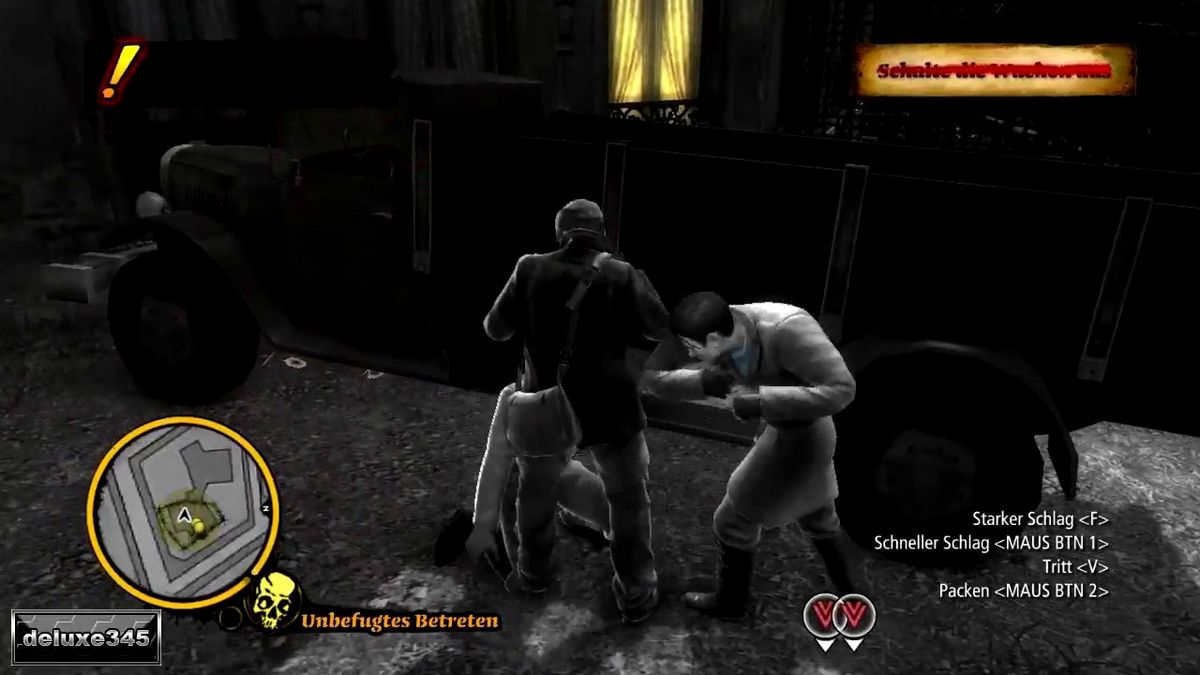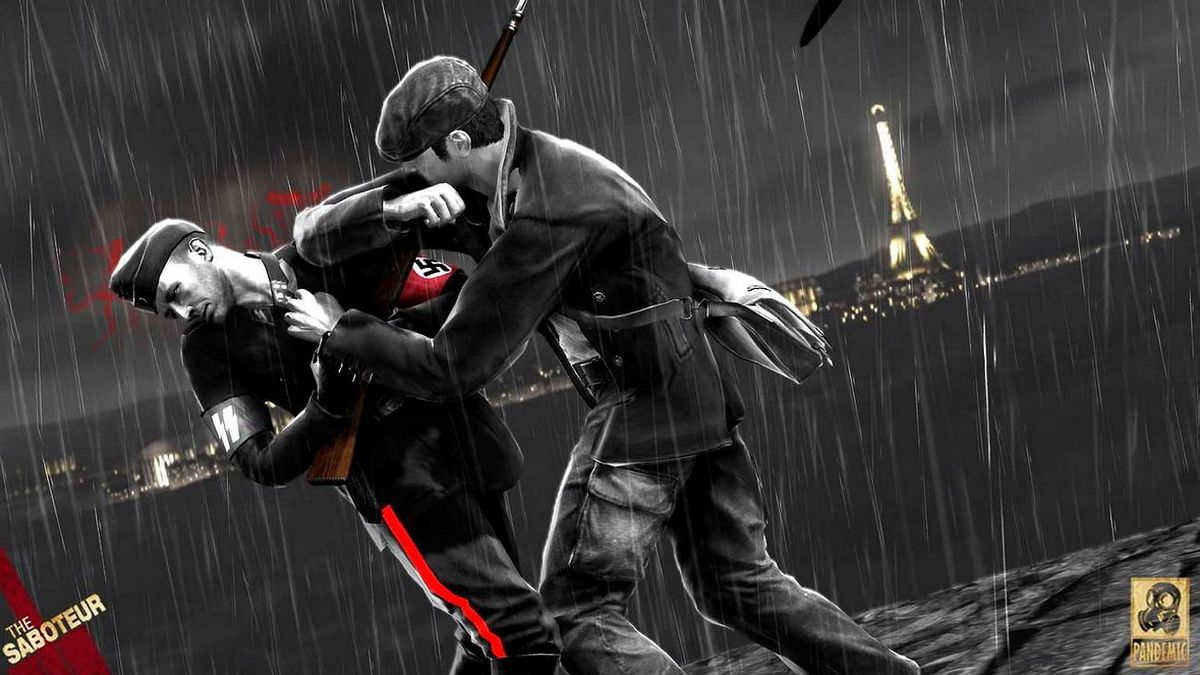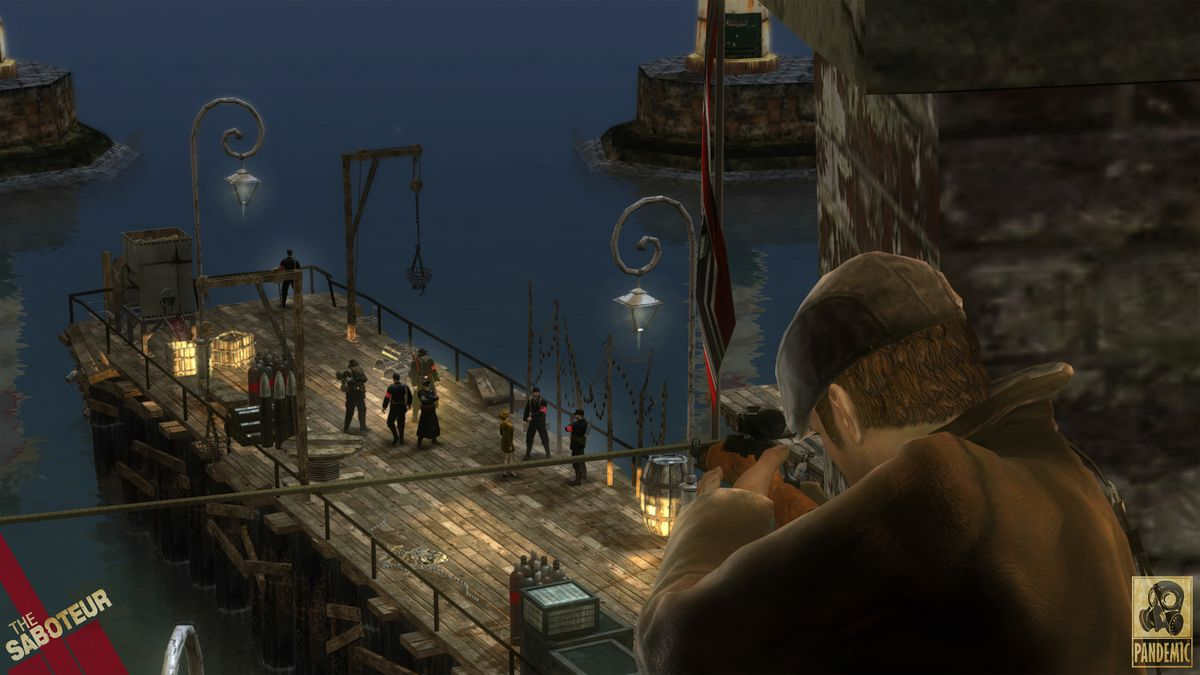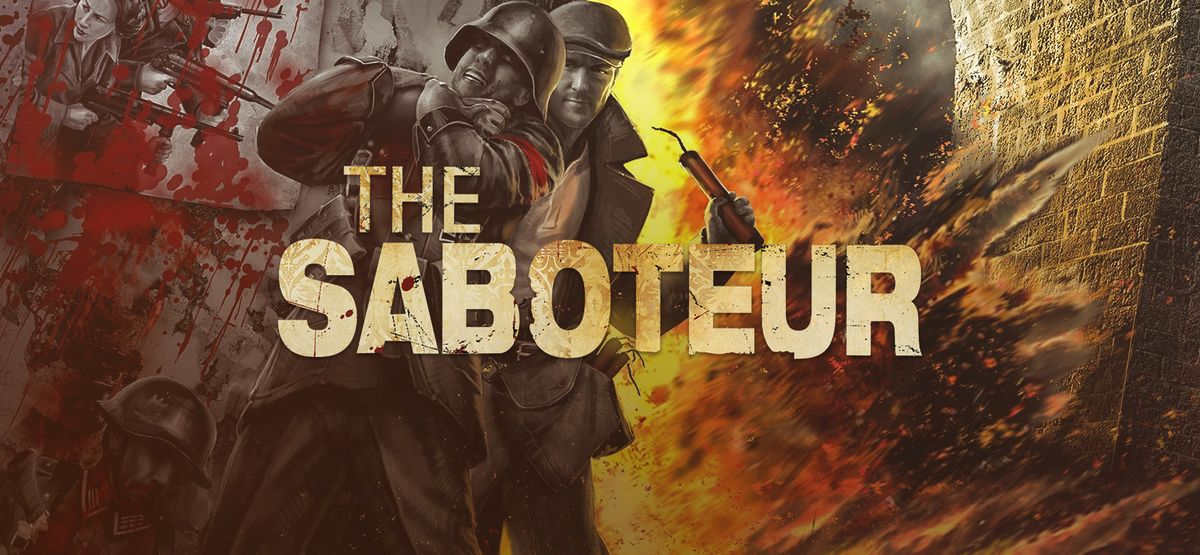The Saboteur, developed by Pandemic Studios and published by Electronic Arts, is an action-packed game that takes place during the Nazi occupation of Paris in World War II. The player assumes the role of Sean Devlin, an Irish race car driver turned resistance fighter who seeks revenge against a ruthless Nazi colonel responsible for his friend’s death. In this open-world game, players must navigate through enemy territory using stealth and sabotage tactics to weaken the German forces and liberate Paris from their grasp.
With its vivid depiction of a war-torn city and immersive gameplay mechanics, The Saboteur offers players an engaging experience that combines elements of both third-person shooter games and open-world exploration. From sneaking past patrolling soldiers to blowing up enemy strongholds with dynamite charges, every aspect of The Saboteur feels authentic to the time period while still providing gamers with plenty of thrilling entertainment.
In this article, we will take a closer look at the many features that make The Saboteur such a compelling game. We will explore its unique blend of historical accuracy and fictional storytelling as well as dive into how it distinguishes itself from other entries in the genre. Whether you’re looking for a new adventure or just want to relive some classic moments from one of gaming’s most exciting periods in history – join me as we explore all there is to know about The Saboteur!
- The Saboteur: An Introduction to the Game’s Historical Setting and Storyline
- Exploring Paris in The Saboteur: A Review of the Game’s Impressive Open World Design
- Mastering Stealth and Combat Mechanics in The Saboteur: Tips for Surviving Nazi-Occupied France
- Unlocking Skills and Upgrades in The Saboteur: Understanding the Game’s RPG Elements
- Celebrating Artistic Expression in The Saboteur: Examining the Role of Graffiti as a Gameplay Mechanic
- Analyzing Critical Reception of The Saboteur: A Look at Reviews from Industry Experts
- Finding Inspiration from Real-Life Heroes: How Resistance Fighters Influenced the Character Development in The Saboteur
- Comparing Similar Games to The Saboteur: Deconstructing its Unique Blend of Genres and Themes
The Saboteur: An Introduction to the Game’s Historical Setting and Storyline
In the game, players assume the role of Sean Devlin, an Irish race car driver turned resistance fighter who seeks revenge against a Nazi officer named Kurt Dierker for killing his best friend.
The storyline is rich with historically accurate details, including real-life figures such as Charles de Gaulle and the French Resistance leader Jean Moulin. The game also depicts the harsh realities of life under occupation, with players witnessing events such as public executions and forced labor camps.
One unique feature of The Saboteur is its use of color to symbolize the state of liberation or oppression in different parts of Paris. Initially presented in black-and-white to represent the oppressive regime under Nazi control, certain areas become more vibrant with color as they are liberated by Sean and his fellow resistance fighters.
Overall, The Saboteur offers a thrilling adventure through one of history’s most tumultuous periods while also highlighting important themes such as heroism, sacrifice, and fighting for freedom.
Exploring Paris in The Saboteur: A Review of the Game’s Impressive Open World Design
The game’s open-world design allows players to explore the city of Paris and complete various missions as Sean Devlin, an Irish mechanic turned resistance fighter.
One of the most impressive aspects of The Saboteur’s open world design is its attention to historical detail. The developers meticulously recreated Paris from the 1940s with accurate architecture, landmarks, and street layouts. This level of authenticity adds to the immersion of the game, allowing players to fully immerse themselves in the atmosphere and culture of wartime France.
Furthermore, The Saboteur’s open world encourages exploration by offering diverse gameplay opportunities throughout its vast map. Players can climb buildings and use stealth tactics for espionage missions or engage in high-speed car chases and gunfights for more action-packed moments. Additionally, side quests provide players with unique challenges that range from assassinating Nazi officers to sabotaging enemy bases.
Overall, The Saboteur succeeds in creating an immersive open-world experience through its attention to historical accuracy and diverse gameplay mechanics. Exploring Paris not only provides entertainment but also offers educational value as it allows players to experience what life was like during one of history’s darkest times while fighting against oppression.
Mastering Stealth and Combat Mechanics in The Saboteur: Tips for Surviving Nazi-Occupied France
As a member of the French Resistance, players must use their wits and skills to sabotage enemy operations and liberate Paris. To succeed, one must learn how to effectively utilize both stealth and combat as they move through occupied territory.
Stealth is key when infiltrating enemy strongholds or completing objectives undetected. Players can crouch behind cover or crawl through shadows to avoid detection by patrolling enemies. Additionally, using distractions such as throwing rocks or whistling can lure enemies away from their post, creating an opportunity for sneaky infiltration. Players should also be aware of the noise they make while moving around – wearing heavy boots will alert nearby foes.
When it comes to combat, players have access to a variety of weapons including pistols, shotguns, rifles and explosives. Each weapon has its own strengths and weaknesses; for example, pistols are quick but lack range while rifles pack a punch but require steady aim. Utilizing cover during firefights is crucial as it provides protection from incoming bullets while allowing players to peek out and take shots at enemies.
Overall, mastering both stealth and combat mechanics in The Saboteur takes practice but yields great rewards when successfully executed. Whether you prefer taking down Nazis with brute force or slipping past them silently like a shadow in the night – understanding these game mechanics will help ensure your success against the occupying forces of Nazi Germany in this thrilling World War II adventure game!
Unlocking Skills and Upgrades in The Saboteur: Understanding the Game’s RPG Elements

The player takes on the role of Sean Devlin, who is a talented mechanic and racing driver turned saboteur during World War II. To progress through the game‘s story missions and side quests, players must gain experience points (XP) by completing objectives such as assassinations or sabotage missions.
The XP gained from these activities can then be used to unlock new abilities, weapons or upgrade existing ones. For example, players can use their XP to increase the damage output of their firearms or improve Sean’s physical abilities like agility and strength. It is essential to prioritize skills that will complement your playstyle and help you complete objectives more efficiently.

Furthermore, some areas in Paris are inaccessible until certain upgrades have been unlocked. Players need to obtain specific items such as wire cutters or lockpicks before they can enter locked buildings or climb walls. These add-ons open up new areas of the map for exploration while also providing unique challenges.

In conclusion, understanding The Saboteur’s RPG elements is vital for achieving success within its gameplay mechanics. By unlocking new skills and upgrading existing ones using earned XP points, players can become more effective in combat situations while also gaining access to previously blocked-off regions of Paris cityscape otherwise out-of-reach without proper tools & gear unlocks.
Celebrating Artistic Expression in The Saboteur: Examining the Role of Graffiti as a Gameplay Mechanic
The game allows players to express their creativity through an intricate system of tagging and painting, which in turn provides them with various advantages when playing the game. This feature not only adds an element of uniqueness to the gameplay experience but also highlights the importance of artistic expression.
Graffiti in The Saboteur can be used both offensively and defensively, allowing players to create distractions or attract attention strategically. By tagging enemy installations or marking potential escape routes, players can stay one step ahead of their enemies while also leaving behind traces of their artistic skills. This creative freedom helps players feel more invested in the narrative and creates opportunities for unique playstyles.
The role played by graffiti as a gameplay mechanic is indicative of how video games are becoming increasingly multidimensional tools that incorporate elements from different art forms. It celebrates the power of self-expression while encouraging gamers to think outside-the-box when it comes to problem-solving within games. Celebrating artistic expression is essential in creating immersive gaming experiences that push boundaries and break down conventional barriers between art forms. Overall, The Saboteur’s implementation demonstrates how gaming can provide platforms where creativity meets technology resulting in beautiful masterpieces benefiting all parties involved—developers, artists, gamers alike!
Analyzing Critical Reception of The Saboteur: A Look at Reviews from Industry Experts
The game was developed by Pandemic Studios and published by Electronic Arts. Upon its release in 2009, the game received mixed reviews from industry experts.
While some praised the unique setting and art style of the game, others criticized its repetitive missions and lackluster combat system. Additionally, many reviewers noted technical issues with the game, such as poor AI behavior and graphical glitches.
Despite these criticisms, The Saboteur still managed to garner a dedicated fanbase due to its engaging story and atmosphere. Many players appreciated the open-world nature of the game, which allowed them to freely explore Nazi-occupied Paris while completing various missions for underground resistance groups.

Overall, while The Saboteur may not have been universally acclaimed upon its release, it remains a memorable entry in gaming history for its unique setting and approach to storytelling within an interactive medium.
Finding Inspiration from Real-Life Heroes: How Resistance Fighters Influenced the Character Development in The Saboteur
This influence is reflected in the character development of the protagonist Sean Devlin, who evolves from a simple mechanic to a skilled saboteur with a deep sense of patriotism and determination.
One example of this influence is Jean Moulin, an important figure in the French Resistance who was captured by the Gestapo and died under torture. In The Saboteur, Moulin’s character appears as Luc Gaudin, leader of the Parisian resistance movement. Similarly, Josephine Baker’s role as both spy for Allied forces and performer in Nazi-occupied France inspired Jules Rousseau’s dual identity as both cabaret singer and informant for Devlin.
Moreover, The Saboteur also pays homage to lesser-known figures such as Violette Szabo – one of only four women awarded Britain’s George Cross for bravery – whose courage inspired Veronique Rousseau’s storyline. By incorporating these characters into the narrative arc through their own personal struggles against oppression and adversity during WWII era France creates an immersive experience that not only educates players but also inspires them.
Ultimately, The Saboteur demonstrates how historical events can serve as catalysts for storytelling innovation within gaming industry while honoring those brave heroes who fought against fascism during World War II. It serves as powerful reminder that even amidst great darkness there are shining examples perseverance which we can use today to enhance our own sense grit when facing modern-day challenges.
Comparing Similar Games to The Saboteur: Deconstructing its Unique Blend of Genres and Themes
The game’s setting during World War II in Nazi-occupied Paris adds another layer of complexity to the gameplay mechanics. Comparing similar games like Assassin’s Creed and Metal Gear Solid shows how The Saboteur stands out with its distinctive blend of genres.
Assassin’s Creed emphasizes parkour movements and assassination techniques while providing an immersive historical backdrop for players. However, it lacks the gritty realism that defines The Saboteur’s portrayal of occupied Paris during WWII. On the other hand, Metal Gear Solid relies heavily on stealth-based gameplay mechanics set in a futuristic sci-fi world. While it offers unique gadgets enabling players to navigate through enemy territory unnoticed, it cannot match The Saboteur’s depth of storylines tied to actual historic events.
The Saboteur also excels in portraying the harsh reality of living under occupation by allowing players to resist oppression actively. Unlike other games where resistance is merely a plot point or background noise, here it forms part of the core gameplay mechanics as Sean Devlin fights against Nazi soldiers while helping civilians overcome their suffering at their hands. Overall, these aspects make The Saboteur stand out from similar games by deconstructing traditional genre boundaries and creating something original yet familiar at once for gamers worldwide.
In conclusion, The Saboteur is a thrilling action-adventure game that combines stealth and open-world exploration with an engaging storyline set in Nazi-occupied Paris during World War II. The game’s unique visual style of black and white with splashes of color adds to the immersive atmosphere of the game, along with its excellent sound design and voice acting.
The gameplay mechanics are solid, featuring a blend of third-person shooting, platforming, and vehicle segments. The stealth elements feel satisfyingly challenging without being frustratingly difficult. Additionally, players can choose between various approaches to missions – be it direct combat or sabotage from the shadows.
One aspect that sets this game apart is its emphasis on player choice. Throughout the game’s narrative arc, players must make choices that affect their character’s relationship with various factions in Paris as well as shape his morality. This mechanic creates a sense of investment in your character’s story arc while also adding replay value to see how different decisions would impact your playthrough.
Overall, The Saboteur is an underrated gem that deserves more recognition for its captivating storytelling and enjoyable gameplay mechanics. If you’re looking for a unique take on World War II-era games or just enjoy action-packed adventures set in open worlds, then give this title a chance-it will not disappoint!
Read More:- Amplify your gaming experience with Medal of Honor Underground – the ultimate WWII action game!.
- Experience Action-Packed Gameplay with Wolfenstein: The Old Blood – A Classic FPS Adventure! (69 characters).
- Return to Castle Wolfenstein: Tides of War – The Ultimate WWII Game Experience!.
- Unleash Your Inner Hero with Robin Hood: The Legend of Sherwood Game – Play Now!.
- Sly Cooper and the Thievius Raccoonus: A Thrilling Game of Cunning Heists!.
- Get immersed in WWII combat with Faces of War – the ultimate game experience!.
- Unleash Your Inner Pilot with Secret Weapons Over Normandy Game – Experience Aerial Warfare Like Never Before!.